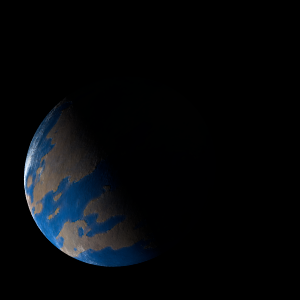|
|
Space Astro
|
Info for exoplanet "Yerapwan"
| Scientific (actual) data |
|---|
| Name | Kepler-1403 b |
| Planet status | Confirmed |
| Radius | 0.191 |
| Orbital period | 5.19492 |
| Discovered | 2016 |
| Updated | 2021-02-05 |
| Tconj | 2454960 |
| Publication | Announced on a website |
| Detection type | Primary Transit |
| Alternate names | 2MASS J19232824+3857364 b, K02995.01, KIC 3848275 b, KOI-2995 b, KOI-2995.01, WISE J192328.24+385736.3 b |
| Star name | Kepler-1403 |
| Right ascension | 290.87° |
| Declination | 38.96° |
| Mag j | 14.559 |
| Mag h | 14.245 |
| Mag k | 14.201 |
| Star distance | 1801 |
| Star metallicity | 0.03 |
| Star mass | 1.11 |
| Star radius | 1.15 |
| Star age | 3.31 |
| Star temperature | 6060 |
| Star alternate names | 2MASS J19232824+3857364, KIC 3848275, KOI-2995, WISE J192328.24+385736.3 |
| Wikipedia article | Kepler-1403 b |
Back
| |
| Fictional info (?) |
|---|
| Suggested name | Yerapwan |
| Planet type | Cold planet |
|
| Atmosphere | Molecular hydrogen | 25% |
| Formaldehyde | 25% |
| Sulfur dioxide | 22% |
| Helium | 22% |
| Xenon | 5.8% |
| Hydrogen peroxide | 0.92% |
| Ozone | 0.12% |
| Atmospheric pressure | 80 bar |
 |
| No known satellites |
| Google search for Yerapwan |
|
Website by Joachim Michaelis
|
|
|
|